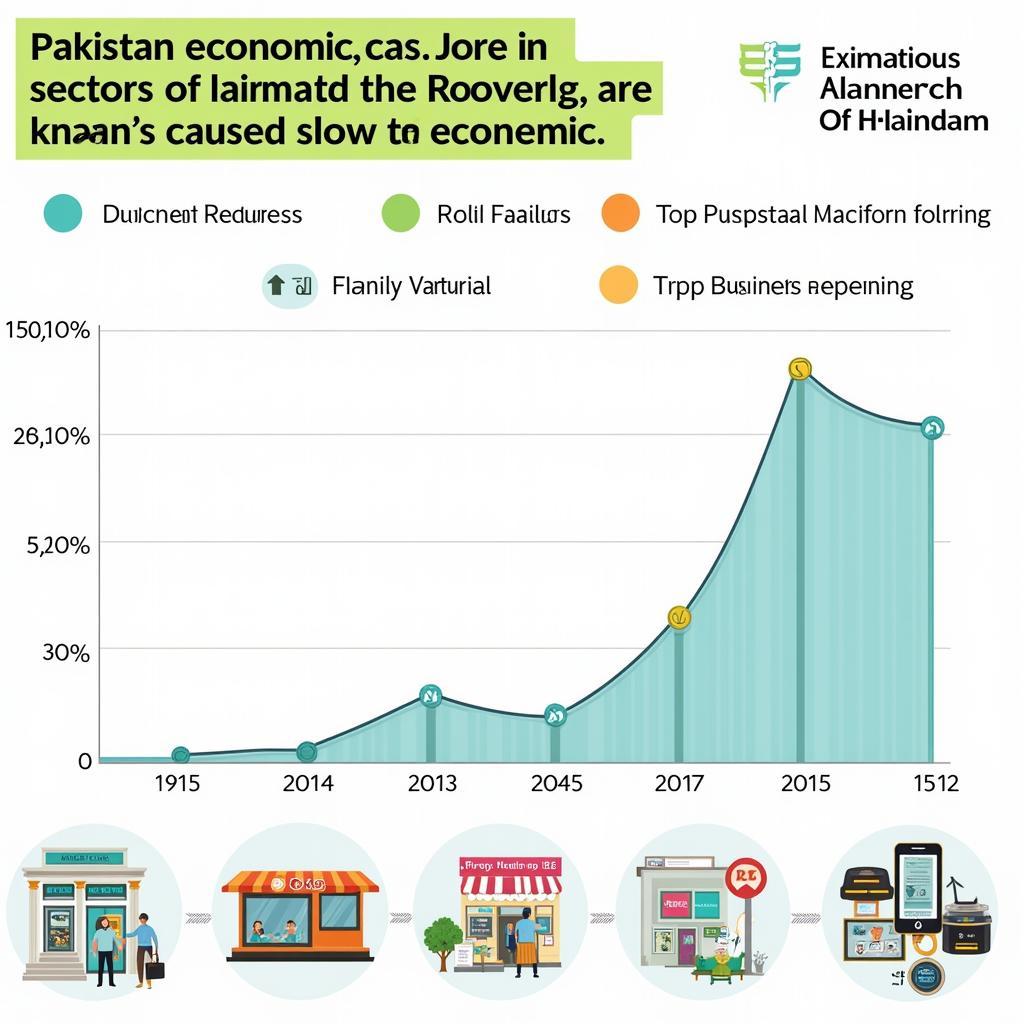The corona pandemic in Pakistan has been a defining period, impacting every facet of life, from health and economy to education and social interactions. This essay explores the multifaceted challenges faced by Pakistan during the COVID-19 crisis, the responses implemented, and the lessons learned. This article will be especially helpful for second-year students searching for information about the corona pandemic in Pakistan.
The Initial Impact of COVID-19 in Pakistan
Pakistan, like many developing nations, faced unique challenges when the pandemic hit. A dense population, limited healthcare infrastructure, and a large informal economy created a perfect storm for the virus to spread rapidly. Initial lockdowns, while necessary to curb the spread, brought economic hardships to millions, especially daily wage earners. The education sector also faced significant disruption, with schools and universities forced to close, impacting millions of students.
The government’s initial response involved lockdowns, travel restrictions, and public awareness campaigns. However, enforcement proved challenging, and the informal nature of a large part of the economy made it difficult to provide adequate support to those affected by the lockdowns.
Pakistan’s Healthcare System Under Pressure
The pandemic placed immense strain on Pakistan’s already fragile healthcare system. Shortages of medical equipment, including ventilators and personal protective equipment (PPE), were reported. Healthcare workers faced immense pressure, working long hours with limited resources. The government, however, quickly mobilized resources to strengthen the healthcare system, including increasing testing capacity and establishing dedicated COVID-19 treatment centers.
The pandemic also highlighted the critical need for investment in public health infrastructure and the importance of preparedness for future health crises. The experience emphasized the role of community health workers in reaching remote and underserved populations.
Economic Ramifications and Recovery Efforts
The economic consequences of the pandemic were significant. Lockdowns disrupted supply chains, reduced exports, and led to job losses. The government implemented various relief measures, including cash handouts, tax breaks, and loan deferments, to mitigate the economic impact. The State Bank of Pakistan also played a crucial role, injecting liquidity into the market and reducing interest rates.
 Pakistan's Economic Recovery Post-COVID
Pakistan's Economic Recovery Post-COVID
Adapting to the “New Normal”
As the pandemic progressed, Pakistan, like other countries, began adapting to the “new normal.” This involved adopting safety protocols, such as mask-wearing, social distancing, and increased hygiene practices. The education sector embraced online learning platforms to ensure continuity of education. Businesses adopted remote work policies and leveraged technology to adapt to the changing environment.
Long-Term Impacts and Lessons Learned
The corona pandemic has left a lasting impact on Pakistan. It has exposed vulnerabilities in the healthcare system, underscored the importance of social safety nets, and accelerated the adoption of digital technologies. The pandemic also highlighted the need for greater regional and international cooperation in addressing global health crises.
What were the immediate effects of COVID-19 in Pakistan?
The immediate effects included lockdowns, economic hardship, and strain on the healthcare system.
How did the pandemic impact Pakistan’s education system?
Schools and universities were closed, leading to a shift towards online learning.
What economic relief measures were implemented by the government?
The government implemented cash handouts, tax breaks, and loan deferments.
Dr. Ayesha Khan, a leading public health expert in Pakistan, notes, “The pandemic has been a wake-up call, highlighting the critical need for investment in public health infrastructure and preparedness for future health crises.” Professor Imran Ali, an economist at Lahore University of Management Sciences (LUMS), adds, “The economic impact has been significant, but Pakistan has shown resilience and is on the path to recovery.”
The corona pandemic in Pakistan has been a challenging period, but it has also provided valuable lessons. The country has demonstrated its ability to adapt and innovate in the face of adversity, paving the way for a stronger and more resilient future.
Frequently Asked Questions (FAQ)
- Where can I find official information on the COVID-19 situation in Pakistan? You can find information on the Ministry of National Health Services, Regulations & Coordination website.
- What were the key challenges faced by Pakistan during the pandemic? Key challenges included a strained healthcare system, economic hardship, and disruptions to education.
- How did Pakistan respond to the pandemic? Pakistan responded with lockdowns, economic relief measures, and public awareness campaigns.
- What are the long-term impacts of the pandemic on Pakistan? Long-term impacts include a greater focus on public health, digitalization, and economic recovery.
- What lessons has Pakistan learned from the pandemic? Lessons learned include the need for stronger healthcare systems, social safety nets, and international cooperation.
- What were the most affected sectors in Pakistan due to the pandemic? The most affected sectors included healthcare, education, and the informal economy.
- What measures were taken to support the economy during the pandemic? Measures included cash handouts, loan deferments, and tax breaks.
For further support regarding the corona pandemic in Pakistan, please contact us. Phone: +923337849799, Email: [email protected] or visit our office at Dera Ghazi Khan Rd, Rakhni, Barkhan, Balochistan, Pakistan. We have a 24/7 customer service team. You might also be interested in other articles on our website related to healthcare and economic recovery in Pakistan.